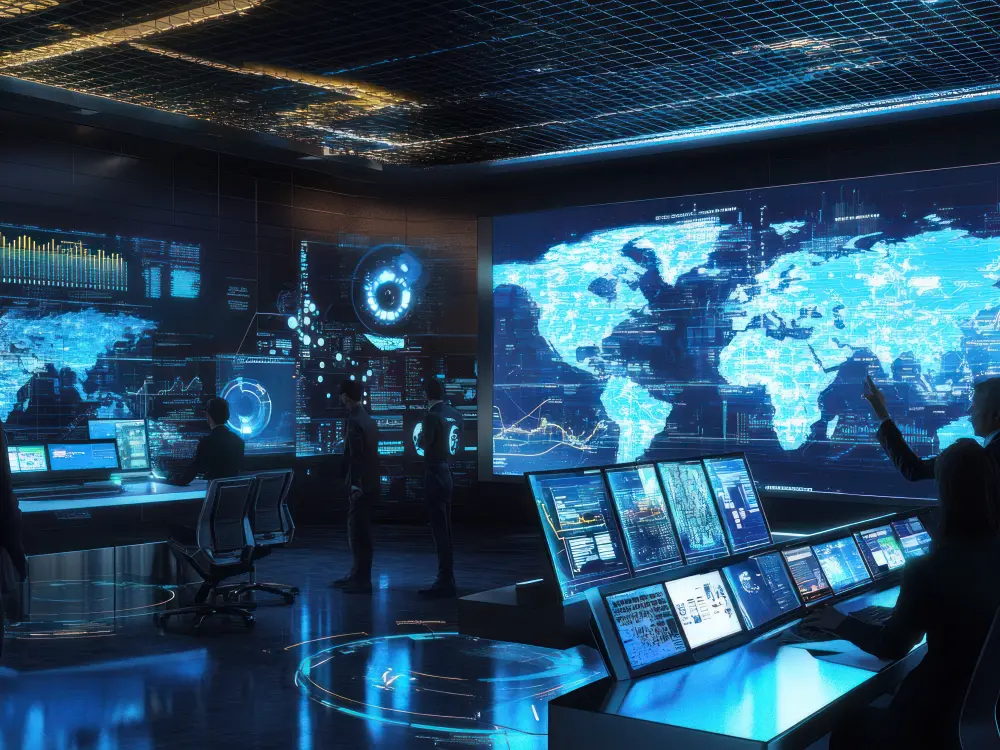In an increasingly complex and fast-paced world, the need for efficient decision-making, real-time data monitoring, and crisis management is more critical than ever. Whether it’s managing large-scale operations, responding to emergencies, or ensuring cybersecurity, modern organizations require centralized hubs to streamline operations and coordinate responses effectively. This is where a command centers becomes an indispensable asset.
Command centers provide the infrastructure and technology to manage a range of activities, from monitoring system performance to overseeing security operations. Let’s delve deeper into why every modern organization, from security agencies to large corporations, needs a command centers.
1. Security and Surveillance
One of the primary functions of command centers is security monitoring. Organizations, especially in sectors like finance, government, and healthcare, need to maintain a secure environment both physically and digitally. A command center helps oversee video surveillance, access controls, and alarm systems in real-time.- Critical infrastructure monitoring: In industries such as banking, telecom, and utilities, command centers play a vital role in monitoring critical infrastructure. For example, real-time surveillance systems allow operators to detect security breaches before they escalate into significant threats.
- Cybersecurity: In the modern digital age, cybersecurity is just as important as physical security. Command centers with dedicated cybersecurity monitoring capabilities enable teams to identify and respond to cyberattacks swiftly, minimizing the potential impact.
2. Emergency Response and Crisis Management
Another major use of command centers is their ability to manage crises, especially in sectors like emergency services, disaster management, and healthcare. During emergencies, every second counts, and command centers provide a central location where teams can quickly analyze data, coordinate resources, and make informed decisions.- Coordination during emergencies: Command centers allow emergency responders to view live feeds from the field, manage logistical needs, and collaborate with relevant agencies in real-time. Whether it’s a natural disaster, a terrorist attack, or a public health crisis, having a centralized response hub ensures that operations run smoothly and effectively.
- Communication hub: During a crisis, communication is key. Command centers provide a hub where all stakeholders can communicate and access relevant information, making it easier to manage the situation, keep track of developments, and respond quickly.
3. Efficient Data Monitoring and Decision-Making
In large organizations, data is generated at an astonishing rate. Managing and making sense of this data is often a complex and time-consuming process. A command center consolidates this data into one unified platform, providing decision-makers with real-time insights to optimize their operations.- Operations monitoring: Command centers allow executives and managers to monitor day-to-day operations in real-time. Whether it’s overseeing supply chains, tracking shipments, or analyzing customer feedback, command centers centralize data to make operations more efficient.
- Informed decision-making: By providing key insights into system performance, customer interactions, and internal processes, command centers enable management teams to make data-driven decisions. Having all the data at their fingertips allows for faster, more informed decisions.
4. Improved Team Collaboration and Communication
A well-organized command center facilitates better collaboration among teams. Whether it’s the IT team, emergency responders, or security personnel, a command center ensures everyone is on the same page.- Collaborative tools: Command centers are equipped with communication tools such as video conferencing, instant messaging, and shared digital workspaces. These tools enhance the flow of information and ensure that all team members have access to the most up-to-date information.
- Real-time updates: With the latest information readily available, teams can make quick adjustments and respond to changing conditions. Whether it’s a change in business strategy or a new development during a crisis, command centers keep everyone aligned and aware of the current situation.
5. Streamlined Operational Efficiency
In large organizations, coordinating multiple departments and managing a high volume of operations can be overwhelming. Command centers consolidate all the information into one centralized location, making it easier to streamline operations and optimize performance.- Resource management: Command centers help allocate resources more efficiently by providing real-time visibility into operational needs. Whether it’s adjusting the workforce or reallocating supplies, a command center ensures that all operations are aligned with the organization’s goals.
- Process automation: By automating various processes, such as reporting, monitoring, and decision-making workflows, command centers allow organizations to operate more efficiently. Automation minimizes manual tasks and reduces the potential for human error, resulting in better performance and fewer operational hiccups.
6. Enhancing Customer Experience
For businesses that rely heavily on customer service, command centers play a pivotal role in enhancing customer experience. By monitoring customer interactions, resolving issues quickly, and tracking feedback, businesses can ensure their customers are satisfied and loyal.- Customer support management: Command centers centralize customer support tickets, live chat interactions, and social media engagements, allowing customer service teams to respond quickly to inquiries. It ensures that every customer interaction is addressed promptly, resulting in higher customer satisfaction.
- Proactive customer engagement: Command centers enable businesses to anticipate customer needs by analyzing trends, feedback, and data. By acting proactively, businesses can prevent issues from escalating and foster better relationships with their customers.




